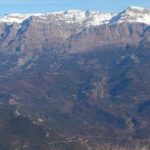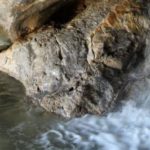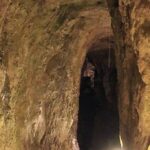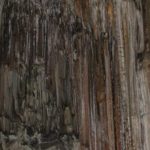
The district of Anogeios comprises the northeast corner of Preveza and enjoys a higher altitude than the rest of the region. The cooler climate and presence of mountains in the region has attributed to its unique range of flora.

This natural lake and surrounding area resembles a Swiss landscape more than that of Greece. It’s a place of undeniable beauty and one enjoyed by hikers, kayakers, canoers, and bird watchers. The abundance of Black Pine and Beech Trees along with a stunning array of wildflowers makes Lake Ziros an unforgettable destination for travellers.

Also known as ‘Nychteridospilios’ (The original ‘Bat Cave’?), is an extremely large cave close to the village of the same name, and a height of 276 metres. As with others, it was used as a refuge by the Greeks during the 298 year Ottoman occupation and has a exceptionally complex interior.

It is found some 25 km from Herakleion, not far from the village of Myrtia. Situated by a river, with highly mythological associations, for the ancients, who believed this to be the dwelling place of nymphs and fairies.

WWII buffs will love exploring this cave where Iatridis hid the Papanikoli submarine. This beautiful sea cave is 120m long and 60m wide and is adorned with stunning stalactites. This is one of the largest caves in Greece, one of the most beautiful and can be visited by boat. Take a day trip and explore the rest of this beautifully lush islet as well with many stunning beaches.

There are a number of small caves scattered around the hiking route in this beautiful canyon. None are documented, so you need to go exploring to find them. Some areas are dangerous, so always ask an experienced spelunker.

This beautiful cave is made up of a large chamber that’s 100m long and 15-25m wide. Its most stunning feature is a cluster of stalagmites that are either as white as alabaster or dark red. They’re grouped in a way that looks like a mother surrounded by children. This cave is hard to reach and explore, so it’s accessible only to very experienced spelunkers. Ask the locals for more information.

Located near the Minoan site of Tylissos, and in common with many other caves had been used in the past as a place of worship. Large rooms with stalagmites and stalactites, make this a great place to visit for even those with no great interest in speleology.

Melissani is a stand-out cave, as it can only be visited by rowboat. The cave domes a beautiful lagoon, and you’ll be able to visit two chambers of the cave by boat. Located close to Sami village, you’ll have to follow a narrow tunnel to get to the cave and then row in. The first chamber is the largest and is an open-air cave as the ceiling caved in over 5000 years ago. This partly-collapsed roof now allows the sun to shine in every day, giving the illusion that diamonds and sparkles rain and float on the surface of the turquoise lagoon. Of interest is the fact that the lagoon water originates across the island from Argostoli’s Katavothres, and is replenished every 14 days. The second chamber is closed and features an islet of archeological importance. This islet, called Islet of Pan, is where the Ancient Greek god was worshipped, and is also where the Statue of Pan and the Nymph Platter were found. In fact, the mythological origins of the cave are equally intriguing. The cave was named after the nymph Melissanthi, who was in love with Pan. He, however, did not return her feelings, and she killed herself in the cave.

About 10 kilometres from Arahova, the cave of Korykio Antro is said to be both a natural wonder and an archaeological treasure. In ancient times it was dedicated to the nymphs of Korykio and the god Panas, as well as being considered the passage to Hades.
